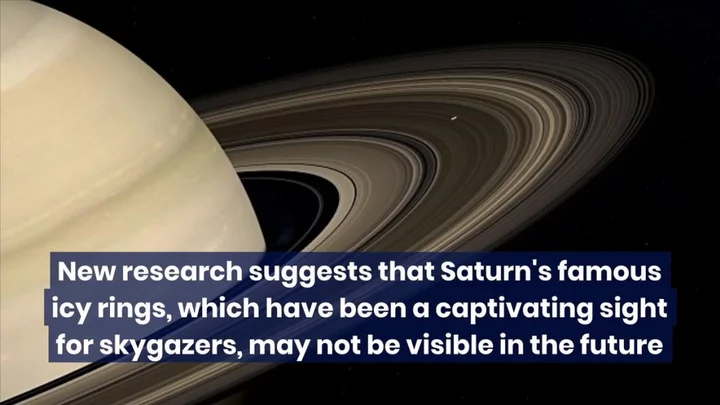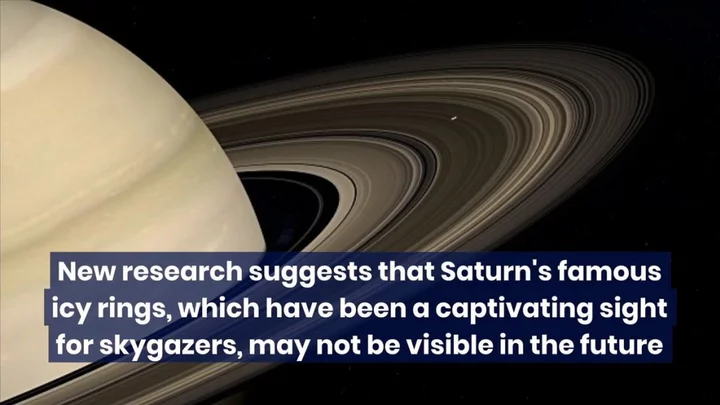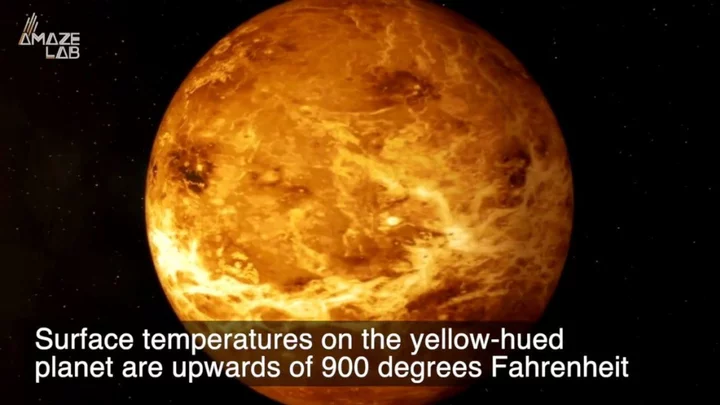
Remains of the 'Atlantis of the North Sea' discovered in Germany
The remains of a church from a sunken town known as the 'Atlantis of the North Sea' has been discovered beneath the mud on Germany's coast. The church is believed to be part of a site called 'Rungholt' located in the Wadden Sea. The town, which was previously thought to be a local legend, has not been seen since 1362 after it was submerged beneath the waves during an intense storm. However, new research has shown that the town really did exist and that they had built reinforcements around the settlement to protect them from the severe elements. The research was carried out on the area by archeologists from Kiel University, Johannes Gutenberg University Mainz, the Center for Baltic and Scandinavian Archaeology, and the State Archaeology Department Schleswig-Holstein. Sign up to our free Indy100 weekly newsletter Searching the Wadden Sea which is the longest stretch of intertidal sand and mud flats on Earth, the team, using geophysical imaging technology found man-made mounds that had been constructed to protect the town against the tides. Amongst this structure were the foundations of a building which the team determined had to be a church which may have been the location of the town centre. In a statement, Dr. Dennis Wilken, a geophysicist at Kiel University of Kiel University said: "Settlement remains hidden under the mudflats are first localized and mapped over a wide area using various geophysical methods such as magnetic gradiometry, electromagnetic induction, and seismics." Dr. Hanna Hadler from the Institute of Geography at Mainz University added: "Based on this prospection, we selectively take sediment cores that not only allow us to make statements about spatial and temporal relationships of settlement structures, but also about landscape development." Dr. Ruth Blankenfeldt, an archaeologist at ZBSA also suggested that the "special feature of the find lies in the significance of the church as the centre of a settlement structure, which in its size must be interpreted as a parish with superordinate function." The storm that washed away Rungholt has gone down in history as one of the largest to ever hit the region, affecting not just Germany but also the Netherlands, Denmark and the UK. The storm happened on January 1362 and has since been referred to as "the great drowning of men." According to historical reports, Rungholt was once a busy trading port for fishermen but was also populated by taverns, brothels and churches. Have your say in our news democracy. Click the upvote icon at the top of the page to help raise this article through the indy100 rankings.
2023-05-27 22:54

Scientists discover 'impossible' ancient Mayan city in remote jungle
It feels like every day there’s a science story that comes along ready to blow our tiny minds, and today is no exception. A series of ancient interconnected cities have been discovered in the remote El Mirador jungle Guatemala, and it’s changing our entire understanding of the ancient civilisation. More than 400 settlements have been uncovered with some dating back as far as 1,000 BC. They’re linked by roads too, and it’s led them to be described as “the first freeway system in the world”. Sign up to our free Indy100 weekly newsletter Richard Hansen, a research professor at the University of Idaho, is an expert on the project and he’d called the findings a “game-changer”. It was previously thought that the Mayan peoples were nomadic, but these cities have changed the scientific community’s understanding. Speaking to the Washington Post, Hansen said: "We now know that the Preclassic period was one of extraordinary complexity and architectural sophistication, with some of the largest buildings in world history being constructed during this time.” On top of the 110 miles of interconnected roads, the discoveries also showed evidence of organised agriculture and even hydraulic systems. The findings are the result of work which first began in 2015, which saw lidar technology uncovered signs of ancient structures below the surface. Archaeologist Enrique Hernández, from San Carlos University said about the findings: “Now there are more than 900 [settlements]… We [couldn’t] see that before. It was impossible,” he said. Have your say in our news democracy. Click the upvote icon at the top of the page to help raise this article through the indy100 rankings.
2023-05-27 15:48

‘Monster stars’ 10,000 times bigger than the Sun detected for first time
Scientists have been peering into the depths of space, looking right back at the early days of the universe, and they’ve found something very interesting indeed. Researchers using the James Webb Space Telescope have come across a discovery that indicates some of the very earliest stars to ever form in the universe were staggering in scale, measuring 10,000 times bigger than the Sun. "Today, thanks to the data collected by the James-Webb Space Telescope, we believe we have found a first clue of the presence of these extraordinary stars," says astrophysicist Corinne Charbonnel of the University of Geneva in Switzerland, in research published in Astronomy & Astrophysics. These features are huge collections of between 100,000 and 1 million stars known as globular clusters, which all feature similar properties. Scientists estimate that they were all formed at the same time. Sign up to our free Indy100 weekly newsletter They’re remnants of the ancient universe and have been described by researchers as "fossils". The cores of these stars are much hotter than those we see in stars today, and scientists suggest it could be down to an excess of hydrogen burning at high temperatures. It’s thought that smaller stars collided with the supermassive stars and relished their energy. However, now most of these global clusters are approaching the very end of their life spans. "Globular clusters are between 10 and 13 billion years old, whereas the maximum lifespan of superstars is two million years," said Mark Gieles, previously at the University of Surrey but now at the University of Barcelona, back in 2018. "They therefore disappeared very early from the clusters that are currently observable. Only indirect traces remain." The researcher states: "If the supermassive star scenario can be firmed up by future studies, this would provide an important step for our understanding of globular clusters and for the formation of supermassive stars in general, with numerous important implications.” Have your say in our news democracy. Click the upvote icon at the top of the page to help raise this article through the indy100 rankings.
2023-05-26 23:26

Man suffers 'triple penis fracture after hearing a 'snap' during sex
One unlucky guy lived out every man’s worst nightmare recently, after suffering a “triple penis fracture”. A man from Tanzania was hospitalised after hearing his penis “snap” during sex. Details of the grisly injury were recorded in the International Journal of Surgery Case Reports. The “snap” happened “when the penis slipped out, lost the way” and struck his female partner “as he was trying to reinsert it”. It’s enough to make anyone wince, and the extent of his injury was revealed after he took himself to hospital. Sign up to our free Indy100 weekly newsletter Doctors took a look and found the penis to be severely swollen and covered in blood. They diagnosed him with having a “fractured” penis, which refers to a rupture in the fibrous connective tissue, called the tunica albuginea. Not only that, but an MRI scan also showed that there were three clear points of injury along the tunica albugine, with the main “fractures” in the erectile tissues known as the corpora cavernosa and the corpus spongiosum. The man was taken into surgery before being discharged three days later. He also had a catheter fitted in his urethra which was removed after three weeks. “He was seen at the clinic six months post-operative where he reported having resumed his sexual life with no any difficulties and the penile shaft looked OK,” his doctors said in the report. It sounds like all kinds of pain, and it’s an injury that is becoming more and more common. The NHS revealed stats in 2020 that showed 38 percent rise in such injuries from 2014 to 2020. Doctors speculated at the time that it could be down to pornography viewing habits leading to more couples trying unusual sexual positions, as well as an increase in the use of Viagra. Have your say in our news democracy. Click the upvote icon at the top of the page to help raise this article through the indy100 rankings.
2023-05-26 18:52

Saturn’s iconic rings are disappearing
Saturn’s rings might disappear pretty soon astronomically speaking, according to new research. A new analysis of data captured by NASA’s Cassini mission, which orbited the planet between 2004 and 2017, has revealed new insights into when the seven rings were formed and how long they might last. During Cassini’s Grand Finale, when the spacecraft completed 22 orbits in which it passed between Saturn and its rings, the researchers observed that the rings were losing many tons of mass per second, which means the rings will only be around another few hundred million years at most. “We have shown that massive rings like Saturn’s do not last long,” said Paul Estrada, research scientist at NASA’s Ames Research Center in Mountain View, California, and a coauthor of the studies, in a statement. “One can speculate that the relatively puny rings around the other ice and gas giants in our solar system are leftover remnants of rings that were once massive like Saturn’s. Maybe some time in the not-so-distant future, astronomically speaking, after Saturn’s rings are ground down, they will look more like the sparse rings of Uranus.” Sign up to our free Indy100 weekly newsletter Saturn’s rings are made mostly of ice but have a small amount of rocky dust created by broken asteroid fragments and micrometeoroids colliding with the rings. The research also found that the rings appeared long after Saturn’s initial formation, and were still forming when dinosaurs roamed the Earth. “Our inescapable conclusion is that Saturn’s rings must be relatively young by astronomical standards, just a few hundred million years old,” said Richard Durisen, professor emeritus of astronomy at Indiana University Bloomington and lead author of the studies in a statement. “If you look at Saturn’s satellite system, there are other hints that something dramatic happened there in the last few hundred million years. If Saturn’s rings are not as old as the planet, that means something happened in order to form their incredible structure, and that is very exciting to study.” Have your say in our news democracy. Click the upvote icon at the top of the page to help raise this article through the indy100 rankings.
2023-05-26 15:52

Saturn’s rings are disappearing and could be gone relatively soon
Saturn’s rings might disappear pretty soon astronomically speaking, according to new research. A new analysis of data captured by NASA’s Cassini mission, which orbited the planet between 2004 and 2017, has revealed new insights into when the seven rings were formed and how long they might last. During Cassini’s Grand Finale, when the spacecraft completed 22 orbits in which it passed between Saturn and its rings, the researchers observed that the rings were losing many tons of mass per second, which means the rings will only be around another few hundred million years at most. “We have shown that massive rings like Saturn’s do not last long,” said Paul Estrada, research scientist at NASA’s Ames Research Center in Mountain View, California, and a coauthor of the studies, in a statement. “One can speculate that the relatively puny rings around the other ice and gas giants in our solar system are leftover remnants of rings that were once massive like Saturn’s. Maybe some time in the not-so-distant future, astronomically speaking, after Saturn’s rings are ground down, they will look more like the sparse rings of Uranus.” Sign up to our free Indy100 weekly newsletter Saturn’s rings are made mostly of ice but have a small amount of rocky dust created by broken asteroid fragments and micrometeoroids colliding with the rings. The research also found that the rings appeared long after Saturn’s initial formation, and were still forming when dinosaurs roamed the Earth. “Our inescapable conclusion is that Saturn’s rings must be relatively young by astronomical standards, just a few hundred million years old,” said Richard Durisen, professor emeritus of astronomy at Indiana University Bloomington and lead author of the studies in a statement. “If you look at Saturn’s satellite system, there are other hints that something dramatic happened there in the last few hundred million years. If Saturn’s rings are not as old as the planet, that means something happened in order to form their incredible structure, and that is very exciting to study.” Have your say in our news democracy. Click the upvote icon at the top of the page to help raise this article through the indy100 rankings.
2023-05-26 00:24

Mexcian girl who was bullied at school has a higher IQ than Einstein and Stephen Hawking
A young girl who was bullied for being autistic may have a higher IQ than Stephen Hawking or Albert Einstein. Adhara Maite Pérez Sánchez, an 11-year-old from Tláhuac, Mexico, is being described as a prodigy by many after recently graduating with a degree in Systems Engineering. She is now going on to study industrial engineering. The extraordinary girl has a passion for astronomy and space, expressing the dream to become the first Mexican woman to travel to space as an astronaut and has given talks about her interest and knowledge of aerospace. She intends to become an astronaut at NASA, and is currently taking courses in astronomy and gravitational waves at the National Autonomous University of Mexico (UNAM), which is widely regarded as a top research university. Sign up to our free Indy100 weekly newsletter Adhara has also had her achievements recognised in 2021 by the Senate of the Republic, as well as being declared one of Mexico’s 100 most influential women, and appearing on the cover Marie Claire Mexico. However, life hasn’t always been easy for Adhara, who struggled with being bullied by her classmates. Often labelled as a ‘weirdo’ for her autism. Adhara was diagnosed with Asperger’s at 3 years old, but has succeeded greatly with it. Recently she has begun developing a bracelet designed to monitor the emotions of children such as herself in order to improve their communication skills. But she hasn’t let the negativity bring her down. Determined to succeed and achieve her goals in spite of what others say about her. Her inspirations include late physicist, Stephen Hawking, and Carmen Félix, a Mexican engineer currently developing a plan to launch a manned mission to Mars. Have your say in our news democracy. Click the upvote icon at the top of the page to help raise this article through the indy100 rankings.
2023-05-23 00:29

Scientists have discovered why we wake up earlier as we get older
Are your grandparents up very early in the morning, without fail? Well, it turns out there are scientific reasons why older people wake up earlier as they get older. It’s been revealed that in later life, the natural process of ageing leads to changes in the times the body approaches sleep. According to HuffPost, our approach towards resting and amount of sleep we require is down to both genetics and our age. Cindy Lustig, who is a professor of psychology at the University of Michigan, said: “Like most of the things that change with age, there’s not just one reason, and they are all interconnected.” Sign up to our free Indy100 weekly newsletter It’s all to do with the brain becoming less responsive as people age to factors such as sunlight, social cues and physical activity which indicate where in the day we are at any given time. “The wiring of the brain is likely not sensing... and responding to the inputs as well as it should because it’s an ageing brain,” Dr. Sairam Parthasarathy, the director of the Center for Sleep and Circadian Sciences at the University of Arizona Health Sciences, also told the publication. “These are all what we call time givers, or they give time to the brain,” he said. In other words, they help the brain sense where it is in the 24-hour circadian cycle. Younger people can more easily connect indicators like eating dinner with the idea of sleeping in the next few hours. However, that’s not as easy for older people to register naturally, especially as their vision tends to suffer in later life. “Interestingly, one of [the reasons] seems to be that the vision changes that come with age reduce the intensity of the degree of light stimulation that our brain receives, which plays an important role in ‘setting’ our circadian clock and keeping it on track,” said Lustig. Have your say in our news democracy. Click the upvote icon at the top of the page to help raise this article through the indy100 rankings.
2023-05-20 22:52

Scientists 'surprised' by 'strange underwater road' discovered in Europe
It’s not quite the lost city of Atlantis, but scientists have just uncovered a slice of history that had been swallowed up by the sea. Experts admitted that even they were surprised when divers unearthed a 7,000-year-old stone road that had lain buried under layers of sea mud. The ancient structure was discovered after archaeologist Igor Borzić, of the University of Zadar, spotted “strange structures” nearly 16 ft (5m) underwater in the Bay of Gradina, off the coast of Croatia. The submerged road once linked the island of Korčula to an artificial, prehistoric settlement that belonged to a maritime culture known as the Hvar. Sign up for our free Indy100 weekly newsletter The university released footage of the incredible finding over the weekend. It showed the passageway which consisted of stacked stones and measured some 12 ft (around 4m) across. Archaeologists believe people walked this road “almost 7,000 years ago”, with radiocarbon dating of wood near the site suggesting the settlement may have been built around 4,900 BC. “In underwater archaeological research of the submerged neolithic site of Soline on the island of Korčula, archaeologists found remains that surprised them,” the University of Zadar said in a Facebook statement. “Namely, beneath the layers of sea mud, they discovered a road that connected the sunken prehistoric settlement of the Hvar culture with the coast of the island of Korčula.” Borzić and his team also discovered another “almost identical” settlement on the other side of Korčula Island. Neolithic artefacts including a stone axe, cream blades and sacrificial fragments, were found at the site which lay at a depth of 4-5m. Understandably, the researchers were delighted and, as they continue to delve into their nation’s past, we wonder what else they’ll unearth. Have your say in our news democracy. Click the upvote icon at the top of the page to help raise this article through the indy100 rankings.
2023-05-20 15:46

Scientists find that AI can read thoughts from monitoring your brain activity
Scientists have revealed they had found a way to combine the technology of brain scans and artificial intelligence to transcribe “the gist” of people’s thoughts. Alex Huth, an assistant professor of neuroscience and computing science at the University of Texas at Austin, and a co-author on the new study published in Nature Neuroscience, said that ‘this is a real leap forward.’ The study was led by Huth and Jerry Tang, a doctoral student in computer science. The main development from this study is that it’s non-invasive. This means that subjects do not require surgical implants. Instead, brain activity is measured using a functional magnetic resonance imaging (fMRI) scanner. Sign up to our free Indy100 weekly newsletter In the study, individuals listened to hours of podcasts in the scanner. Then, given the participant’s consent to have their thoughts decoded, they listened to a new story and the machine-generated corresponding texts from brain activity. It’s not a word-for-word transcript. For example, when an individual heard the phrase ‘I don’t have my driver’s licence yet’, the model decoded the individual’s thoughts to read as ‘she has not even started to learn to drive yet.’ Even when participants thought up their own stories, the machine was able to decode their thoughts still. Tang acknowledged that the advancements made in the study had the potential for negative aftermath. Tang said, ‘we take very seriously the concerns that it could be used for bad purposes and have worked to avoid that.’ They ran tests that highlighted that unless the machine had been trained on an individual’s particular brain activity, it could not decode its thoughts. An individual had to allow for the machine to train their brain activity over a long period of time inside a fMRI scanner for it to work. Researchers also found that it was easy to ‘sabotage’ the machine. Three participants were told to tell a different story in their mind, or count by seven, while listening to one of the podcasts. The study highlights even more development with artificial intelligence, after the popularity of OpenAI’s Chat GPT has sparked debate around the potential of AI. Have your say in our news democracy. Click the upvote icon at the top of the page to help raise this article through the indy100 rankings.
2023-05-20 00:27

Nasa discover new planet that is entirely covered with volcanoes
Nasa scientists have found a planet they believe is covered by active volcanoes. In a study published in the journal Nature, scientists said they found the planet, which is the size of Earth about 90 light-years from Earth in the Crater constellation. They called it LP 791-18 d and one part is constantly scorched by sunlight, while the other is always in darkness. “The day side would probably be too hot for liquid water to exist on the surface. But the amount of volcanic activity we suspect occurs all over the planet could sustain an atmosphere, which may allow water to condense on the night side,” Björn Benneke, one of the astronomers who studied the planet, told NASA’s Jet Propulsion Laboratory. Sign up to our free Indy100 weekly newsletter The LP 791-18 system contains at least two other planets, called LP 791-18 b and c. The latter is two-and-a-half times larger than Earth and more than seven times its mass. It also affects the orbit of LP 791-18 d, making it travel along an elliptical path around the system’s sun. That path means LP 791-18 d is deformed every time it completes an orbit. “These deformations can create enough internal friction to substantially heat the planet’s interior and produce volcanic activity at its surface,” according to NASA. “A big question in astrobiology, the field that broadly studies the origins of life on Earth and beyond, is if tectonic or volcanic activity is necessary for life,” study co-author Jessie Christiansen said. “In addition to potentially providing an atmosphere, these processes could churn up materials that would otherwise sink down and get trapped in the crust, including those we think are important for life, like carbon.” Have your say in our news democracy. Click the upvote icon at the top of the page to help raise this article through the indy100 rankings.
2023-05-19 19:15

Scientists warn that New York City is starting to sink
When most people picture New York City, it’s likely that its many skyscrapers are one of the first things that come to mind, but now, scientists are concerned that the city is sinking under their weight. It comes after the findings of a new study observed subsidence of the footprint after the geology beneath the city was modelled and compared to satellite data. The study was conducted by geologist Tom Parsons from the United States Geological Survey and colleagues from The University of Rhode Island, who found that, under the weight of its multiple skyscrapers, NYC is sinking by one to two millimetres per year. Subsistence can occur due to shifting soft sediments and the sheer weight of the load on the ground pushing it down. The study calculated that there are over 1 million buildings in NYC with a cumulative mass of approximately 764,000,000,000 kilograms. Sign up to our free Indy100 weekly newsletter While a few millimetres of subsidence per year might sound like nothing, some parts of the city are subsiding faster – with calculations putting a sample site in lower Manhattan at 294 millimetres. To calculate the rates of subsidence, experts compared their modelling with satellite data that measured the land surface height. The scientists warn that thought must be given to low-lying cities such as NYC, which is home to 8 million people, particularly given rising sea levels and increasing flood risks. Parsons explained: “The point of the paper is to raise awareness that every additional high-rise building constructed at coastal, river, or lakefront settings could contribute to future flood risk.” Have your say in our news democracy. Click the upvote icon at the top of the page to help raise this article through the indy100 rankings.
2023-05-18 16:59
